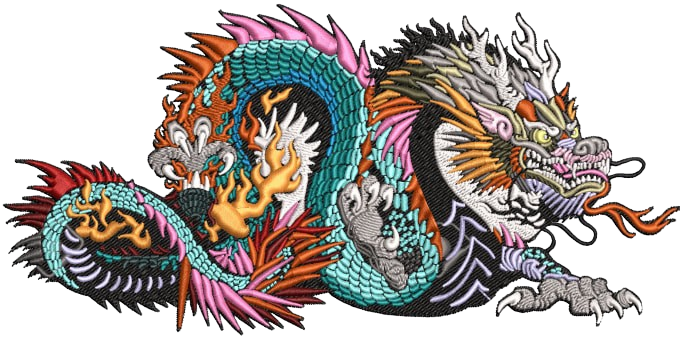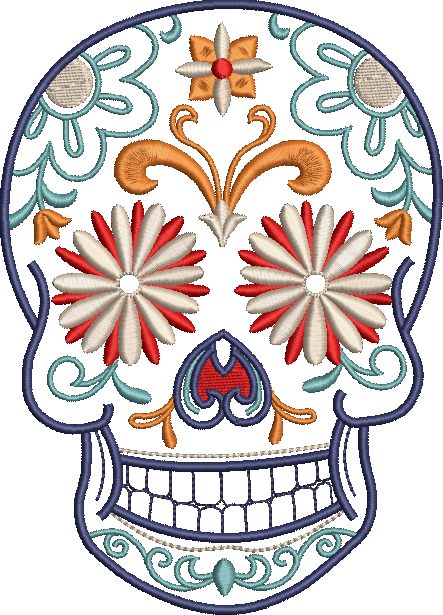Everything You Need to Know About Embroidery Hoops
Embroidery has been a loved craft for hundreds of years, and one of the maximum essential gear in this artwork shape is the embroidery hoop. Whether you are a seasoned needleworker or a amateur simply exploring the sector of embroidery, this easy tool performs a vital position in making sure a smooth, tension-unfastened stitching enjoy. In this blog, we are able to discover the records, kinds, uses, and care of embroidery hoops to help you apprehend why they continue to be a staple inside the craft.
Table of Contents
What is an Embroidery Hoop?
An embroidery hoop is a circular frame, commonly made from wooden, plastic, or metal, that holds the fabric taut whilst you work to your embroidery project. It facilitates maintain consistent anxiety at the fabric, stopping puckering or wrinkling as you stitch. The hoop is normally made of earrings: an inner and an outer ring. The inner ring fits within the outer ring, and you can modify the tension by tightening the screw mechanism that holds the 2 earrings collectively.
Embroidery hoops come in various sizes, ranging from small hoops for delicate, tricky designs to big hoops for large tasks like quilts or wall hangings. The proper length and type of hoop could make a massive difference within the ease of your sewing and the general first-class of your paintings.
History of Embroidery Hoops
The use of embroidery hoops may be traced returned to the seventeenth century, once they were added as a device for stabilizing fabric whilst stitching. Before this invention, embroiderers had to pin their fabric to a timber body or stretch it throughout a inflexible floor, which frequently brought about choppy anxiety and a much less-than-perfect outcome.
The advent of the embroidery hoop revolutionized the craft, imparting an efficient manner to hold fabric taut without pinning it down. Over the years, the design of the ring evolved, from easy wooden hoops to extra sophisticated, adjustable variations fabricated from diverse materials. Today, modern-day embroidery hoops stay used by hobbyists, artisans, and even specialists throughout the globe.
Types of Embroidery Hoops
Embroidery hoops are available a wide range of substances and sizes, each providing distinct benefits. Here are the maximum commonplace sorts:
- Wooden Hoops: Wooden hoops are traditional and famous amongst embroiderers. They have a herbal, classic feel and are to be had in one-of-a-kind finishes which include clean maple or rustic birch. Wooden hoops are commonly light-weight and comfortable to handle, despite the fact that they will want to be tightened more often to maintain the cloth taut.
- Plastic Hoops: Plastic embroidery hoops are light-weight and often are available quite a few vibrant colorations. They are durable and smooth to modify, making them perfect for beginners or those running on smaller, simpler tasks. Plastic hoops are regularly less costly than their wooden opposite numbers, but they can every so often lack the aesthetic appeal of wood.
- Metal Hoops: Metal hoops are known for his or her sturdiness and capacity to keep anxiety continually. They are regularly used for heavier fabrics or larger embroidery initiatives. While they’ll now not have the aesthetic appeal of wooden, they are practical and durable, supplying smooth edges that make stitching less complicated.
- Adjustable Hoops: Adjustable embroidery hoops will let you trade the dimensions of the inner ring, which makes them versatile and appropriate for diverse material thicknesses. These hoops usually have a screw or twist-lock mechanism that lets you alter the tension fast.
Choosing the Right Hoop
Selecting the proper embroidery hoop depends on numerous factors, together with the form of fabric you are the usage of, the design you’re stitching, and your personal alternatives. Here are some recommendations that will help you make the fine choice:
- Fabric Type: If you are working with thick fabric, along with denim or canvas, a metallic hoop or a huge timber hoop may additionally offer the important tension. For lighter fabrics like linen or cotton, a plastic or smaller wooden hoop ought to suffice.
- Project Size: Larger projects, such as quilts or tapestry-style pieces, will need larger hoops to keep the material taut. Smaller hoops are best for specified, smaller designs or handkerchiefs.
- Comfort: Try out distinctive hoop substances to look which one feels the maximum comfortable on your fingers. Wood is natural and easy, whilst plastic hoops may be lighter. Consider the feel of the hoop throughout lengthy stitching sessions.
- Tension Control: Adjustable hoops are a outstanding alternative for people who want extra control over the cloth tension, making them a flexible preference for numerous sewing techniques.
How to Use an Embroidery Hoop
Using an embroidery hoop is straightforward, however it is crucial to comply with the ideal steps to make sure your material remains taut without overstretching it.
Here’s a brief guide to the use of an embroidery hoop:
- Prepare the Fabric: Begin by means of slicing your fabric slightly large than the scale of the hoop. Lay the material on a flat floor, and region the inner ring of the hoop on pinnacle of it.
- Insert the Fabric into the Hoop: Press the outer ring over the cloth and the inner ring. Gently pull the material to make certain it is evenly stretched, with no wrinkles or sagging.
- Tighten the Hoop: Once the fabric is in vicinity, use the screw mechanism to tighten the hoop. Be careful now not to overtighten, as this will purpose the cloth to stretch too much and warp your layout.
- Start Stitching: With your material securely in place, start sewing your layout. The hoop will maintain the fabric taut, permitting you to focus on your creative paintings.
- Re-tighten as Needed: As you stitch, the fabric can also loosen barely. Re-tighten the screw as had to maintain most reliable anxiety.
Caring for Your Embroidery Hoops
To make sure your embroidery hoops closing for lots initiatives to come back, it’s important to take right care of them. Here are some guidelines for retaining your hoops:
- Clean Regularly: Wipe your wooden hoops with a gentle, dry fabric to put off any dust or fabric fibers. If your hoop receives stained, use a moist material and mild soap, however make sure to dry it right away to save you warping.
- Avoid Excessive Moisture: Excessive exposure to moisture can damage timber hoops, causing them to warp or crack. Store your hoops in a dry, cool location when now not in use.
- Store Carefully: Keep your hoops in a secure spot to avoid them getting scratched or damaged. If you have got metallic hoops, shop them faraway from moisture to save you rust.
People Also Ask
An embroidery hoop is used to hold fabric taut while you stitch, ensuring even tension and preventing puckering or wrinkling during embroidery.
Embroidery hoops are commonly made from wood, plastic, or metal, each offering different benefits for comfort, durability, and ease of use.
The right hoop size depends on your project’s fabric and design. Smaller hoops are perfect for detailed, delicate work, while larger hoops are better for bigger designs or heavier fabrics.
To tighten an embroidery hoop, simply adjust the screw on the outer ring to hold the fabric in place. Ensure the fabric is taut without overstretching.
Yes, embroidery hoops are ideal for cross-stitch as they keep the fabric taut, allowing for precise, even stitching.
Wooden hoops are popular for their aesthetic and smoothness, while plastic hoops are lightweight, affordable, and often come in a variety of colors. It’s up to your personal preference and project needs.
Make sure the fabric is evenly stretched inside the hoop and tighten the screw until the fabric feels secure. Using a small fabric patch or stabilizer underneath can also help prevent slippage.
Clean wooden hoops with a dry cloth to prevent dust buildup, and store them in a dry, cool place to avoid warping. For metal hoops, keep them away from moisture to prevent rusting.
An adjustable embroidery hoop allows you to modify the inner ring's size to accommodate different fabric thicknesses, providing more flexibility than regular, fixed-size hoops.
Conclusion
Embroidery hoops are an essential tool for any needlework enthusiast, providing the necessary tension and stability for beautiful, professional-looking stitches. Whether you’re just starting out or are an experienced stitcher, the right hoop can make all the difference in your creative process. With so many options available, finding the perfect embroidery hoop for your projects is easier than ever. So, choose your hoop, grab your needle, and start creating intricate and stunning designs that showcase the art of embroidery!

Embroidery Digitizing
GetDigitizing provides professional embroidery digitizing services, transforming your designs into high-quality, machine-ready files for flawless stitching results.
Embroidery Quote

Vector Art
We can vectorize your raster image into your required vector format,Also we can redraw existing vector file, which can be used for screen printing or anything else.
Vector Quote

Live Image
"Live images offer dynamic, real-time visuals, capturing motion and changes, enhancing user experience with interactive, engaging, and up-to-date content."
Live Img Quote
GetDigitizing Most Popular Embroidery Design

1638 Sold
Price $3 Only

1578 Sold
Price $3 Only

1975 Sold
Price $3 Only

1769 Sold
Price $3 Only

1638 Sold
Price $3 Only

1578 Sold
Price $3 Only

1975 Sold
Price $3 Only

1769 Sold
Price $3 Only

1638 Sold
Price $3 Only

1578 Sold
Price $3 Only

1975 Sold
Price $3 Only

1769 Sold
Price $3 Only
